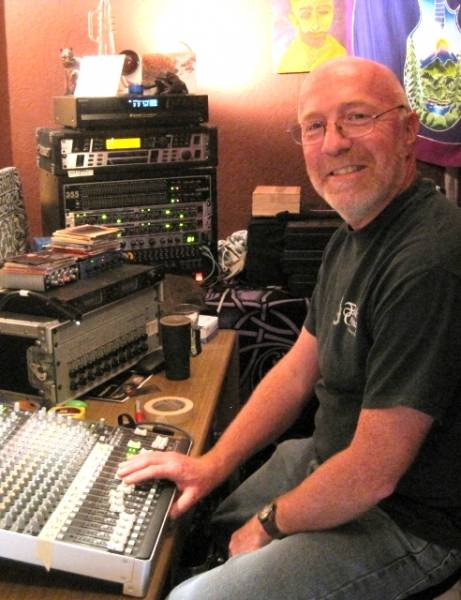|
DEMOS Face The Music: If It's Not Appropriate Or Edited Well, Your VO Demo Suffers March 5, 2015  By Peter Cutler By Peter CutlerAudio Engineer & Demo Producer This is a not-so-brief "rantĒ about voice over demo production. I have heard so many VO demos over the years that, in my opinion, don't even begin to do the performer justice. This is especially true of folks who are closer to the start of their careers, but I hear it with established pros as well, from time to time. What am I talking about? Obviously, it all starts with the performances, and there are others more qualified than I who can address this issue with greater authority. I am going to talk about demo production, which is what I do every day, and, specifically, music, as used in the context of a VO demo. OFTEN INAPPROPRIATE Music is not carpet for your voice to sit on. Why is the music chosen for so many VO demo pieces - regardless of VO genre - so bland, or even worse, downright inappropriate for the reads it is there to support? The relationship between VO and music is an intimate one. Ideally, they should dance together like a couple in love. The style, rhythm, tempo, instrumentation, texture and mix are all of critical importance here. But beyond these attributes, there is an intangible. Emotion. How do you want your listener to feel listening to a spot on your demo? The music should amplify whatever feeling this is. CATCH THE ARC Even if a truly appropriate piece of music is chosen, then comes the question of music editing. Rarely does a given piece of music really work with a voice over if it is just slipped underneath in its natural, unedited form. A VO read has an arc, just like a great story, song, play, screenplay, or what have you. It builds, in some way, to a climax, getting you to where it wants you, and then implores you to buy something, watch something on TV, go to a theater to see something, etc. So it follows that the music should also have this arc, right? This is accomplished, most of the time, by careful EDITING of the music. Why is this so often missing? PUTTING IT ALL TOGETHER The voice and music should work together, in terms of rhythm and tempo. Every piece of music has its own rhythm and tempo. We all know that. But every voice over read also has its own rhythm and tempo. Would you put a piece of "Speed MetalĒ behind a slow, romantic read? Hopefully not. But not just because the styles donít mix. The rhythms and tempos also donít mix. But letís add another layer here. Ideally, the words against the music should really create a musical counterpoint to each other. The voice over not only gets its message across effectively on its own, but it also acts as an added instrument in the musical arrangement by hitting certain musical beats or hitting off beats within the music bed, depending on the effect we want to create. You will know this when you hear it! CREATES A TEXTURE The overall texture of the music comes into play, as well. It makes me crazy when I hear a spot in which the VO is trying, desperately - and often unsuccessfully - to compete with an instrument or section of the band that is smack dab in its frequency range and timbre. An example that comes to mind would be a female VO over a trumpet solo. That trumpet is going to do its best to eat that poor female VO for lunch! Yes, we could bring the music down some under her at this point, and we could also EQ the music during the trumpet solo to get out of her way a bit. But, really, the best approach, in my view, would be to use a section of the music or a version of the chosen piece of production music that does not contain that damn trumpet in the first place! Then, maybe we can bring the trumpet in here or there to accentuate an idea or two. Now the trumpet really gets to do what it does best and the VO talent gets to do what she does best. IN THE MIX Finally, how is this music mixed against the voice? Remember, I said that the voice and music should be doing a dance together. I like to imagine a passionate tango.) The two production elements are locked together intimately. They are there to support each other so that each is enhanced by the other. So many times, I hear music that is just barely present in the mix, with the voice WAAAAAYYYY out front. Itís almost as if the music is just leaking in from another room! Of course, in some cases, this may be a blessing because the chosen music is so wrong for the piece, that the less of it we actually hear the better, right? Not only is this kind of mix annoying (to me at least), but it is clear signal to anyone actually in the media industry that you are an amateur. It screams that this could not possibly be actual work that got on the air or anywhere else for that matter. STUDY GOOD COMMERCIALS Listen to what gets on the air. The music and voice are intertwined. They are not separate elements in an effective mix. They are aware of each other in every way. At the other extreme, I have also heard cases where the music all but obliterates the voice over. This technique may work well in some forms of popular music, where the drums, guitars and keyboards may be more the star of the show than the vocals. (And thatís OK if that is your intent.) But in our industry the vocal is of utmost importance. Itís our message and it pays the bills. MIXING IS AN ART I get finished spots that have been on the air, that suffer from this malady. These are mostly local retail spots and promos, not national network stuff. Drowning out the voice with music is even worse than mixing the music too low. This is why mixing is an art, not just a science. Anyone can have a fully functional recording and production studio on their computer desktop these days. But just because you have the tools and even know what buttons do what in your DAW (digital audio workstation), that does not mean you have developed the ear and skills required to properly mix a voice with music in the most effective way possible. Even those who have mastered the technical skills of recording and mixing do not, necessarily, have that intangible ability to choose and then incorporate music well with a voice over track. The best ones do, of course. Thatís why they continue to be in such demand in the industry. But, sadly, many do not and, even more sadly, they are producing sub-standard demos for VO performers who will learn a hard lesson or two after their money has been spent and the demo is out there not doing them much good. CHOOSE DEMO TEAM WISELY Be very careful in the production of your demo. Donít rush. Choose the producer and engineer very carefully, Listen to some of their existing work before you plunk down your hard-earned money. There are predatory demo "millsĒ out there. Anyone who has been in this field for more than a week knows this. (At least they should.) And even if they are honest, sincere and "niceĒ people, that does not necessarily mean they know what they are doing, technically or creatively. Someone once said to me, "you canít teach TASTE.Ē Amen. If the relationship between voice and music is treated with respect in the production process, and good, solid production techniques are used, the result will be much greater than the sum of the separate elements. The message will leap out of the listenerís speakers and grab them where they need to be grabbed. And they may not, consciously, realize exactly why this particular spot really cooks for them (all the better if they donít, really). They just know they got the message very clearly and they had a great time in the process. ------------------------ ABOUT PETER Peter Cutler has been an audio engineer since 1972, starting at a public radio station at the age of 15. He's been recording live acoustic music for the Folkscene Radio Program since that time, and has spent many years engineering radio and TV commercials, promos, movie trailers and narrations in several Hollywood studios. For the past 25 years he has worked closely with Marice Tobias, recording and engineering all of the VO demos she has directed in that time. In addition to this work, he offers editing and mastering of demos consisting of existing tracks and demo "piece work." He and his wife, Deborah, run Fiddlers Crossing (A Gathering Place) in Tehachapi, CA, which presents live acoustic music on a regular basis. Email: petercutlerdemodoc@gmail.com Fiddlers Crossing: http://fiddlerscrossing.com |
With Sean Daeley and Paul Stefano - check it out!
Get your bi-weekly dose here ... all things VO!
For essential voice-over business strategies
Inspiring interviews help your VO career
As of the NEW website launch, 03/22/2012









.png)
In the old days we used clips from our work to make our next demos. These days, copyright concerns make that risky business...so we're back to the demo.
Of course it should be intertwined, of course the level, tempo and tonal distribution should be nuanced. Often, even on national TV (happens to me in UK, birthplace of excellent audio) it is not only 'bad' music but too busy, too loud. The brain switches mode between music and speech - so why confuse it?
An expert engineer/producer says levels can always be eased back at least 6dB without in any way compromising the creative arc, yet with a great gain in intelligibility. Clients should bear in mind: THEY know every word of the script, the audience does not.